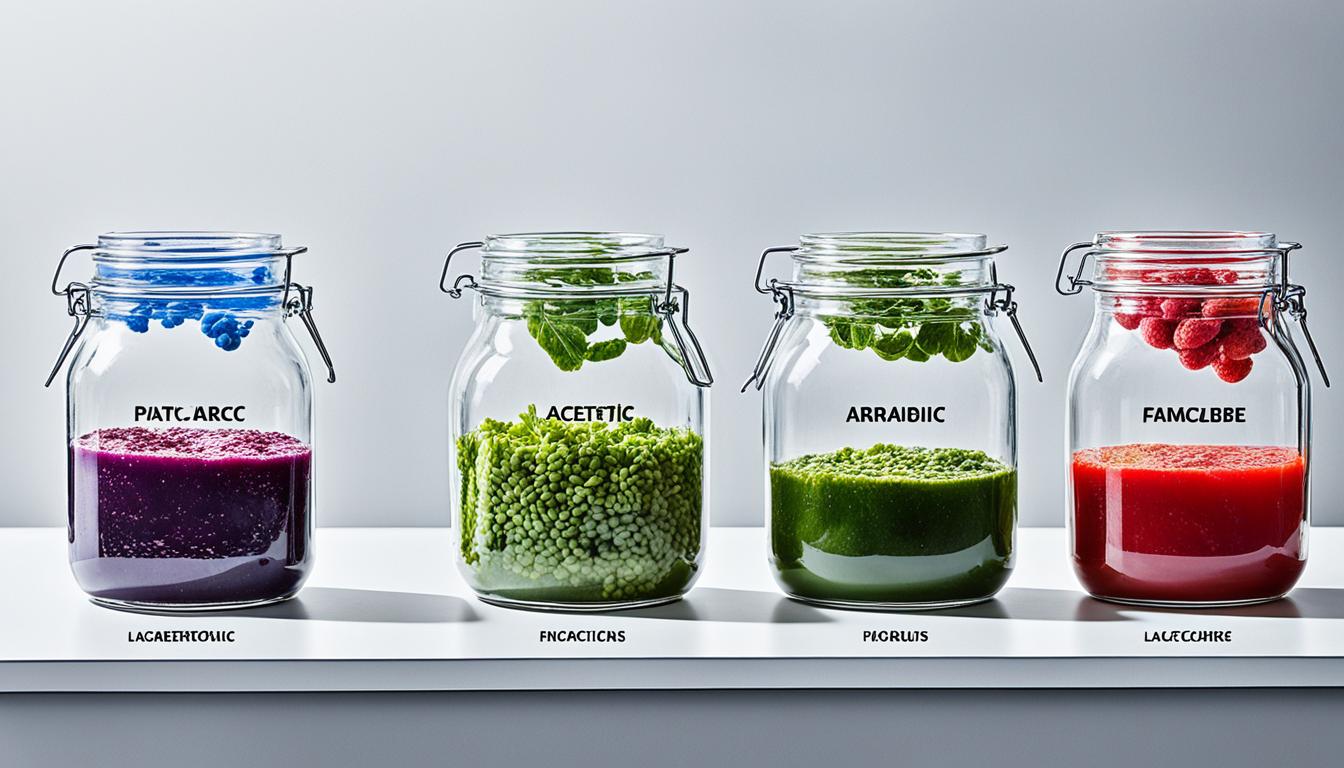Have you ever wondered how certain foods can stay fresh and delicious for a long time without the need for artificial preservatives? The answer lies in the fascinating science of lactic acid fermentation preservation.
From sauerkraut to yogurt, lactic acid fermentation has been used for centuries as a natural method to extend the shelf life of various foods. But what exactly is the lactic acid fermentation process and how does it contribute to food preservation?
Lactic acid fermentation involves the action of lactic acid bacteria (LAB) that convert sugars into lactic acid through a chemical reaction. This process not only enhances food safety but also creates unique flavors and textures. But that’s not all – lactic acid fermentation has even more to offer!
In this article, we will explore the science behind lactic acid fermentation, unveil the benefits it brings to both food and health, and discover the various preservation techniques used with this method. Get ready to uncover the hidden secrets of lactic acid fermentation preservation and its fascinating applications!
Continue reading to dive into the transformative world of lactic acid fermentation preservation.
Benefits of Lactic Acid Fermentation
Lactic acid fermentation offers numerous benefits beyond its role in food preservation. The process of fermentation enhances the nutritional value of foods by activating enzymes that break down complex macronutrients into simpler, more digestible forms. This not only improves the overall nutrient profile of the fermented products but also enhances their bioavailability.
Moreover, lactic acid fermentation contributes to the flavor and texture of the food, imparting a tangy and distinctive taste. The interaction between lactic acid bacteria and the food substrate during fermentation results in various flavor compounds that add complexity and richness to the final product.
One notable advantage of fermented foods is their probiotic content. Probiotics are beneficial bacteria that promote gut health and support the immune system. Consuming fermented foods regularly can introduce these beneficial bacteria into the digestive system, promoting a healthy balance of gut microbiota.
Research has shown that lactic acid fermentation has positive effects on digestion, nutrient absorption, and overall well-being. The consumption of fermented foods has been associated with improved gastrointestinal health, increased nutrient assimilation, and better immune function.
Furthermore, lactic acid fermentation has wide-ranging applications in the food industry. It is used in the production of various condiments, sauces, and beverages to enhance their flavor and increase their shelf life. Additionally, lactic acid fermentation techniques are also being explored in the development of plant-based meat substitutes to improve their taste, texture, and nutritional content.
Ongoing research continues to investigate the potential health benefits and innovative applications of lactic acid fermentation. Scientists are studying the effects of fermentation on specific health conditions, such as digestive disorders and allergies. Additionally, new fermentation techniques and technologies are being developed to optimize the process and expand its potential applications in various industries.
The Science behind Lactic Acid Fermentation
Lactic acid fermentation is a fascinating process that relies on the intricate interactions between lactic acid bacteria (LAB) and their environment. LAB species like Leuconostoc, Pediococcus, and Lactobacillus are central to this fermentation process. Through anaerobic metabolism, these bacteria convert sugars in the food substrate into lactic acid.
As lactic acid accumulates, the pH of the food gradually decreases, creating an environment that inhibits the growth of spoilage-causing organisms. The strains of LAB and the specific conditions used in the fermentation significantly impact the final product. These factors determine the flavor profile, texture, and shelf life of the fermented food.
Various elements, such as temperature, salt concentration, and the presence of other microbes, can influence the fermentation process. This complexity underscores the ongoing research and advances in lactic acid fermentation technology. These innovations contribute to the development of new preservation methods and the continuous improvement of fermented food products.
